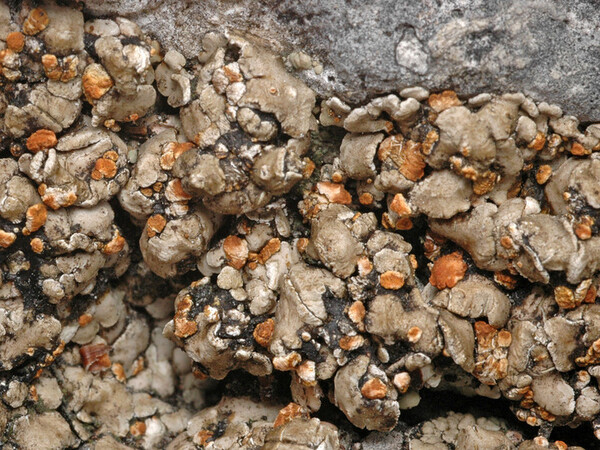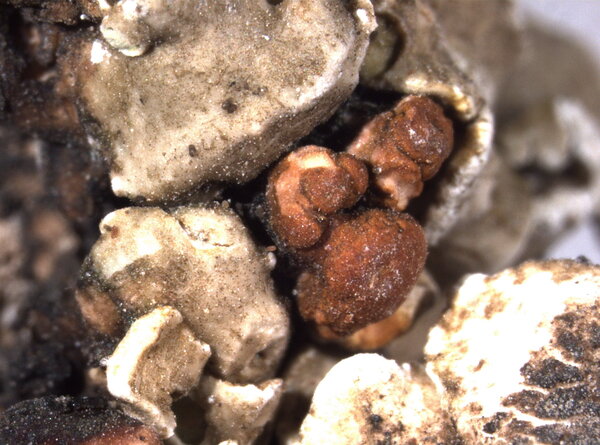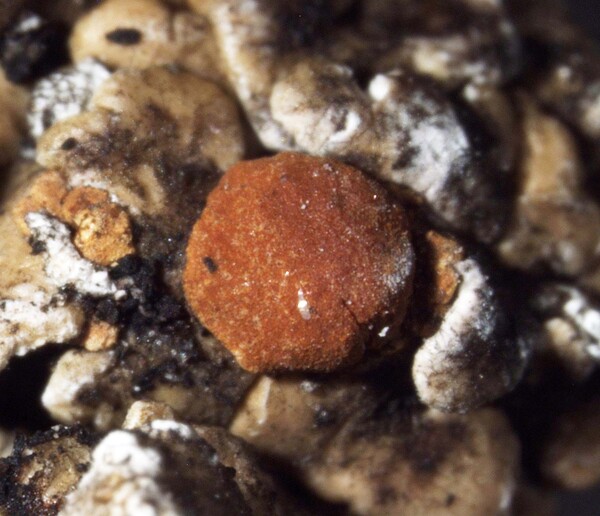Psora testacea Hoffm.
Descr. Adumbr. Pl. Crypt. Lich., 1: 99, 1794.
Synonyms: Biatora testacea (Hoffm.) W. Mann; Chrysopsora testacea (Hoffm.) M. Choisy; Lecanora testacea (Hoffm.) Ach.; Lecidea testacea (Hoffm.) Ach.; Protoblastenia testacea (Hoffm.) Clauzade & Rondon; Psora testacea var. argillicola B. de Lesd.
Distribution: N - Ven (Nascimbene & Caniglia 1997, Caniglia & al. 1999), TAA, Lomb, Piem, VA (Piervittori & Isocrono 1999), Lig. C - Tosc, Laz (Nimis & Tretiach 2004), Abr (Recchia & Villa 1996), Sar. S - Camp (Aprile & al. 2003b, Nimis & Tretiach 2004), Bas (Potenza & al. 2014), Cal (Puntillo 1996), Si (Brackel 2008b).
Description: Thallus squamulose, grey to greenish grey, sometimes with a brownish tinge, forming up to 5 cm wide patches. Squamules 0.5-3 mm wide, irregular in outline and sometimes lobulate, at first flat, then more or less convex, white-pruinose at least along the margins, contiguous to slightly imbricate, with a pale lower surface. Cortex of anticlinally arranged hyphae, overlain by an epinecral layer; medulla white. Apothecia 1-2(-3.5) mm across, single or clustered, with a rusty red to orange-brown, strongly convex, epruinose disc, and a soon excluded proper margin. Proper exciple poorly developed, of parallel hyphae; epithecium golden brownish, K+ red, N-; hymenium 50-70 μm high, colourless in lower half, brownish in upper part, amyloid; paraphyses simple or forked, hardly swollen at tips; hypothecium colourless or pale brown. Asci 8-spored, elongate-clavate, with a thin, outer amyloid layer and a thickened tholus penetrated by a tube, the sides of which stain I/KI+ deep blue, without an ocular chamber, Porpidia-type. Ascospores 1-celled hyaline, ellipsoid, 10-14 x 5-7 μm. Photobiont chlorococcoid. Spot tests: thallus K+ faintly yellow, C-, KC-, P-, UV-; apothecia K+ red. Chemistry: cortex with low amounts of atranorin; apothecia with anthraquinones.
Note: a species which is widespread in southern and eastern Europe, with optimum in fissures of base-rich or lime-containing metamorphic rocks, most frequent in dry alpine valleys and in upland areas along the eastern side of the Peninsula, but not reaching beyond treeline.
Growth form: Squamulose
Substrata: rocks, soil, terricolous mosses, and plant debris
Photobiont: green algae other than Trentepohlia
Reproductive strategy: mainly sexual
Subcontinental: restricted to areas with a dry-subcontinental climate (e.g. dry Alpine valleys, parts of Mediterranean Italy)
Commonnes-rarity: (info)
Alpine belt: absent
Subalpine belt: extremely rare
Oromediterranean belt: rather rare
Montane belt: rare
Submediterranean belt: very rare
Padanian area: absent
Humid submediterranean belt: absent
Humid mediterranean belt: absent
Dry mediterranean belt: absent

Predictive model

| Herbarium samples |
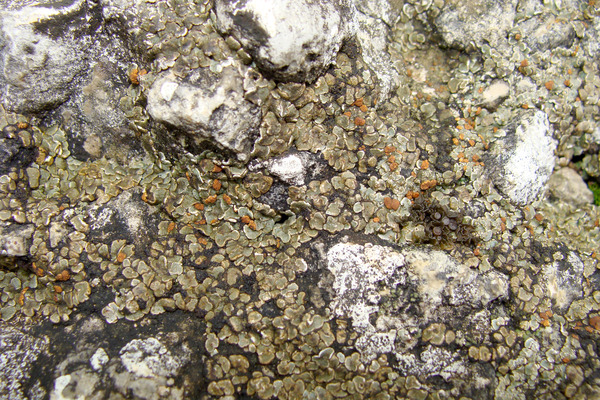

Felix Schumm CC BY-SA 4.0
[16502], Germany, Baden-Württemberg, Kreis Göppingen, Gosbach- Bad Ditzenbach, Tierstein, 48,57461° N, 9,68471° E, 737 m, auf Kalkfelsen am Albrand. Leg. et det. Schumm 20.06.2010.
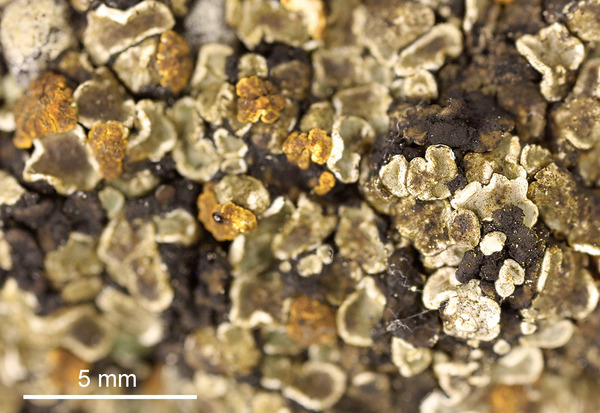

Felix Schumm CC BY-SA 4.0
[16502], Germany, Baden-Württemberg, Kreis Göppingen, Gosbach- Bad Ditzenbach, Tierstein, 48,57461° N, 9,68471° E, 737 m, auf Kalkfelsen am Albrand. Leg. et det. Schumm 20.06.2010.
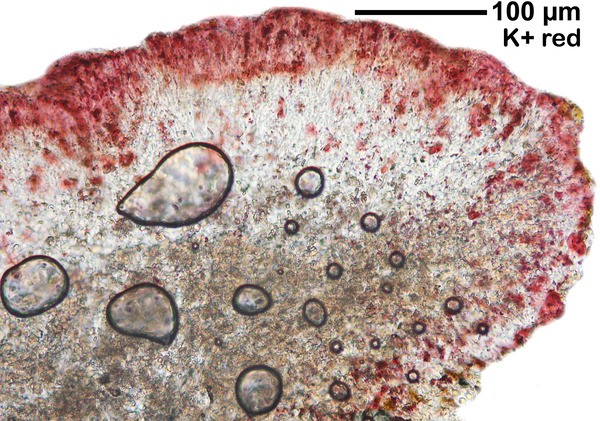

Felix Schumm CC BY-SA 4.0
[16502], Germany, Baden-Württemberg, Kreis Göppingen, Gosbach- Bad Ditzenbach, Tierstein, 48,57461° N, 9,68471° E, 737 m, auf Kalkfelsen am Albrand. Leg. et det. Schumm 20.06.2010.
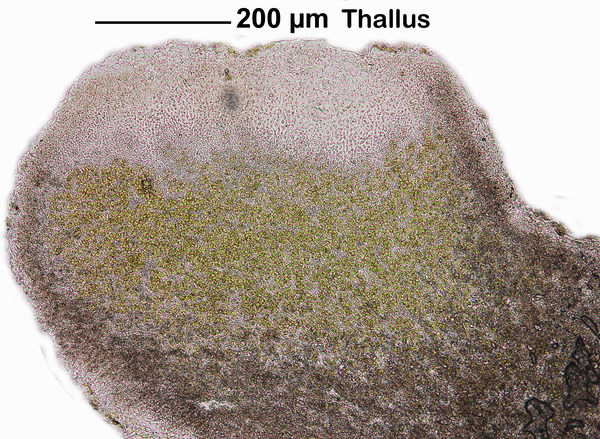

Felix Schumm CC BY-SA 4.0
[16502], Germany, Baden-Württemberg, Kreis Göppingen, Gosbach- Bad Ditzenbach, Tierstein, 48,57461° N, 9,68471° E, 737 m, auf Kalkfelsen am Albrand. Leg. et det. Schumm 20.06.2010.
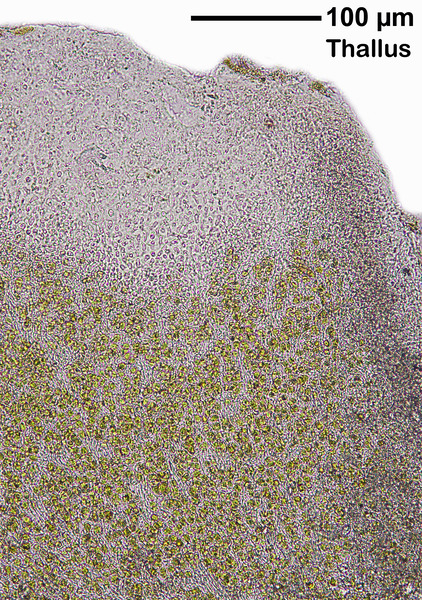

Felix Schumm CC BY-SA 4.0
[16502], Germany, Baden-Württemberg, Kreis Göppingen, Gosbach- Bad Ditzenbach, Tierstein, 48,57461° N, 9,68471° E, 737 m, auf Kalkfelsen am Albrand. Leg. et det. Schumm 20.06.2010.


Felix Schumm CC BY-SA 4.0
[16502], Germany, Baden-Württemberg, Kreis Göppingen, Gosbach- Bad Ditzenbach, Tierstein, 48,57461° N, 9,68471° E, 737 m, auf Kalkfelsen am Albrand. Leg. et det. Schumm 20.06.2010.


Felix Schumm CC BY-SA 4.0
[16502], Germany, Baden-Württemberg, Kreis Göppingen, Gosbach- Bad Ditzenbach, Tierstein, 48,57461° N, 9,68471° E, 737 m, auf Kalkfelsen am Albrand. Leg. et det. Schumm 20.06.2010.
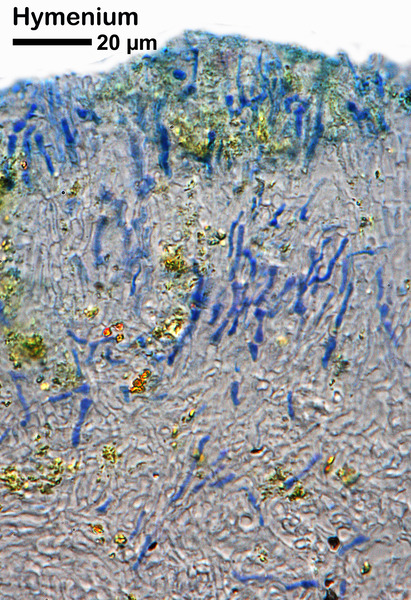

Felix Schumm CC BY-SA 4.0
[16502], Germany, Baden-Württemberg, Kreis Göppingen, Gosbach- Bad Ditzenbach, Tierstein, 48,57461° N, 9,68471° E, 737 m, auf Kalkfelsen am Albrand. Leg. et det. Schumm 20.06.2010.
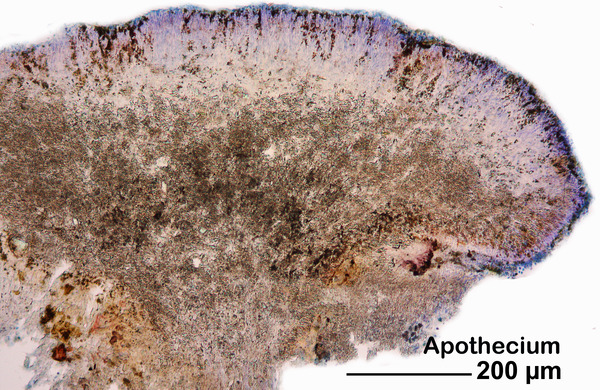

Felix Schumm CC BY-SA 4.0
[16502], Germany, Baden-Württemberg, Kreis Göppingen, Gosbach- Bad Ditzenbach, Tierstein, 48,57461° N, 9,68471° E, 737 m, auf Kalkfelsen am Albrand. Leg. et det. Schumm 20.06.2010.
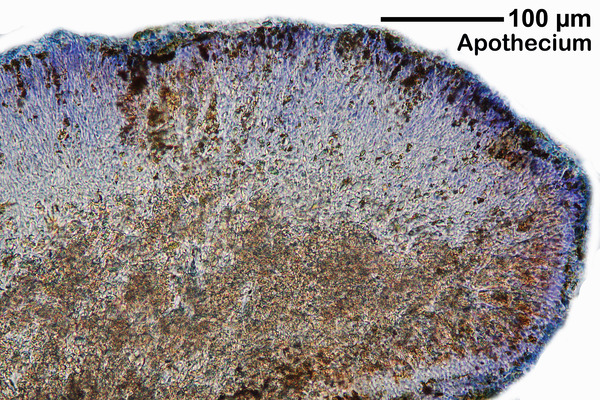

Felix Schumm CC BY-SA 4.0
[16502], Germany, Baden-Württemberg, Kreis Göppingen, Gosbach- Bad Ditzenbach, Tierstein, 48,57461° N, 9,68471° E, 737 m, auf Kalkfelsen am Albrand. Leg. et det. Schumm 20.06.2010.


Felix Schumm CC BY-SA 4.0
[16502], Germany, Baden-Württemberg, Kreis Göppingen, Gosbach- Bad Ditzenbach, Tierstein, 48,57461° N, 9,68471° E, 737 m, auf Kalkfelsen am Albrand. Leg. et det. Schumm 20.06.2010.
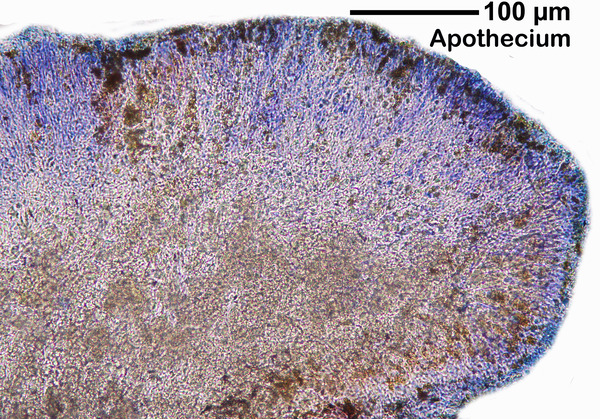

Felix Schumm CC BY-SA 4.0
[16502], Germany, Baden-Württemberg, Kreis Göppingen, Gosbach- Bad Ditzenbach, Tierstein, 48,57461° N, 9,68471° E, 737 m, auf Kalkfelsen am Albrand. Leg. et det. Schumm 20.06.2010.
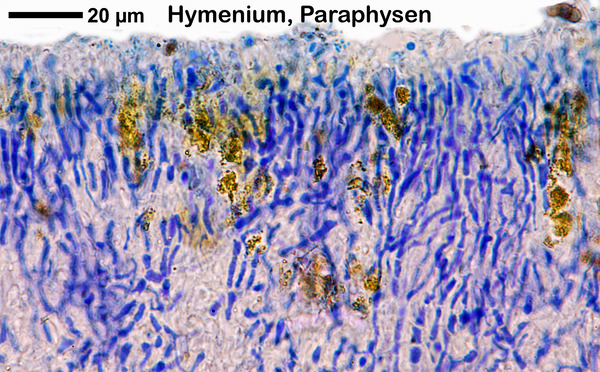

Felix Schumm CC BY-SA 4.0
[16502], Germany, Baden-Württemberg, Kreis Göppingen, Gosbach- Bad Ditzenbach, Tierstein, 48,57461° N, 9,68471° E, 737 m, auf Kalkfelsen am Albrand. Leg. et det. Schumm 20.06.2010.
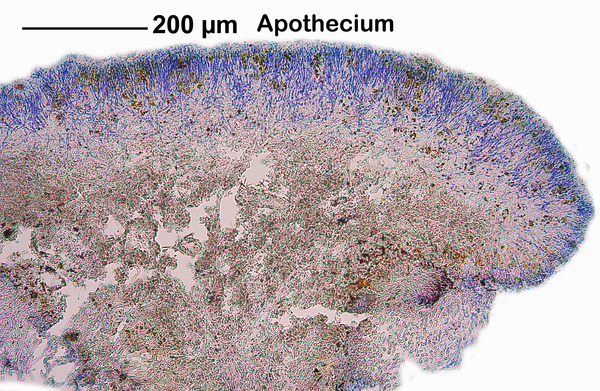

Felix Schumm CC BY-SA 4.0
[16502], Germany, Baden-Württemberg, Kreis Göppingen, Gosbach- Bad Ditzenbach, Tierstein, 48,57461° N, 9,68471° E, 737 m, auf Kalkfelsen am Albrand. Leg. et det. Schumm 20.06.2010.
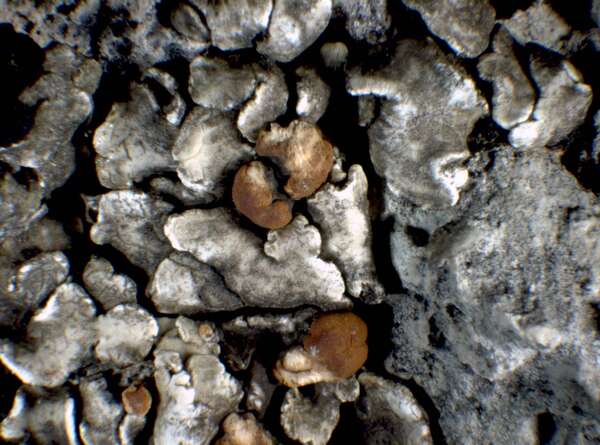

P.L. Nimis; Owner: Department of Life Sciences, University of Trieste
Herbarium: TSB (32466)
2001/12/09
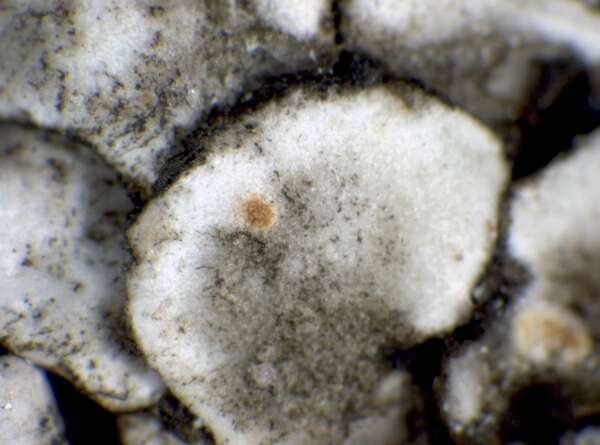

P.L. Nimis; Owner: Department of Life Sciences, University of Trieste
Herbarium: TSB (32466)
2001/12/09

Courtesy Danièle et Olivier Gonnet - Source: https://www.afl-lichenologie.fr/Photos_AFL/Photos_AFL_P/Psora_testacea.htm
France, fissures de rochers - session AFL 2008 - Lozère
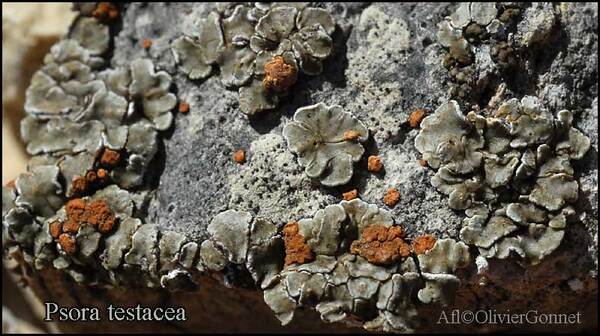
Courtesy Danièle et Olivier Gonnet - Source: https://www.afl-lichenologie.fr/Photos_AFL/Photos_AFL_P/Psora_testacea.htm
France, fissures de rochers - session AFL 2008 - Lozère
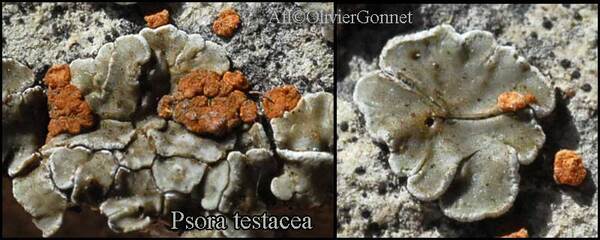
Courtesy Danièle et Olivier Gonnet - Source: https://www.afl-lichenologie.fr/Photos_AFL/Photos_AFL_P/Psora_testacea.htm
France, fissures de rochers - session AFL 2008 - Lozère
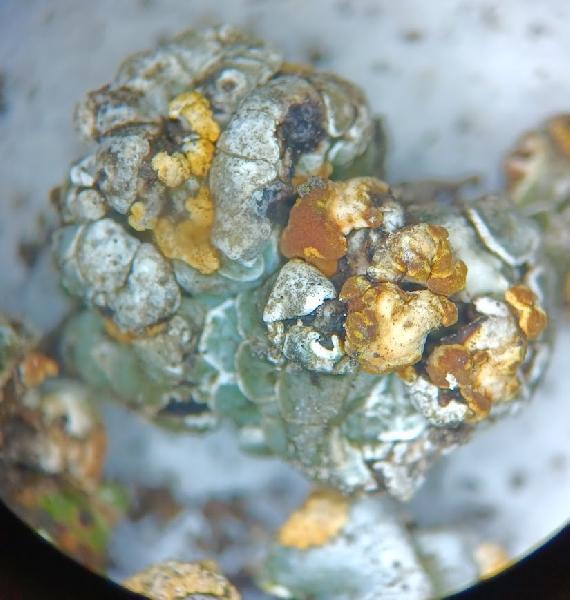
Giovanna Potenza - CC BY 4.0
Italia, Basilicata, Madonna del Soccorso Castelluccio S. 1100 m - suolo calcareo
HLUC n. 691
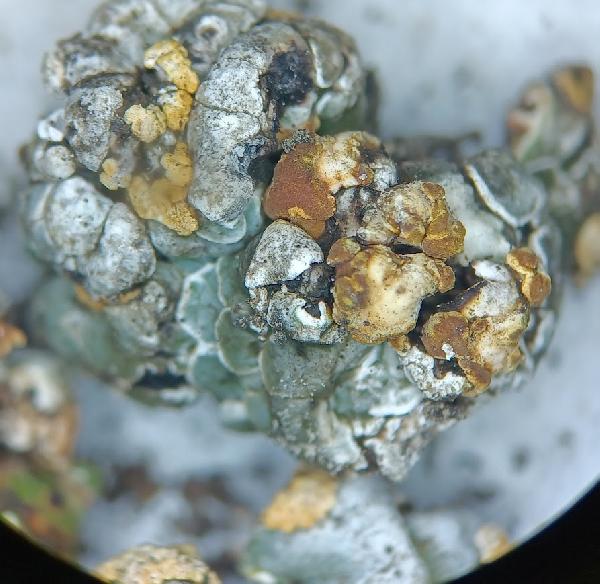
Giovanna Potenza - CC BY 4.0
Italia, Basilicata, Madonna del Soccorso Castelluccio S. 1100 m - suolo calcareo
HLUC n. 691
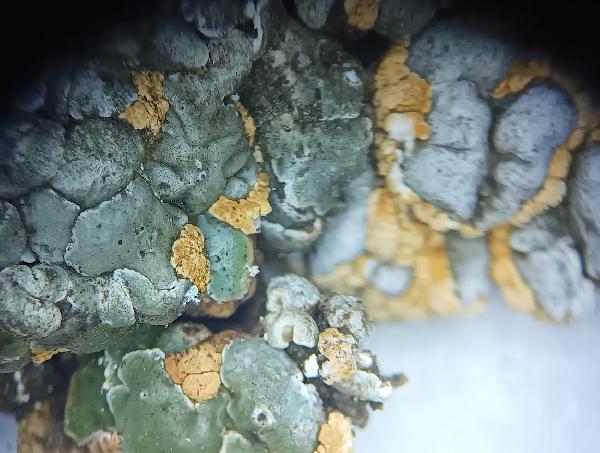
Giovanna Potenza - CC BY 4.0
Italia, Basilicata, Madonna del Soccorso Castelluccio S. 1100 m - suolo calcareo
HLUC n. 691

 Index Fungorum
Index Fungorum
 GBIF
GBIF
